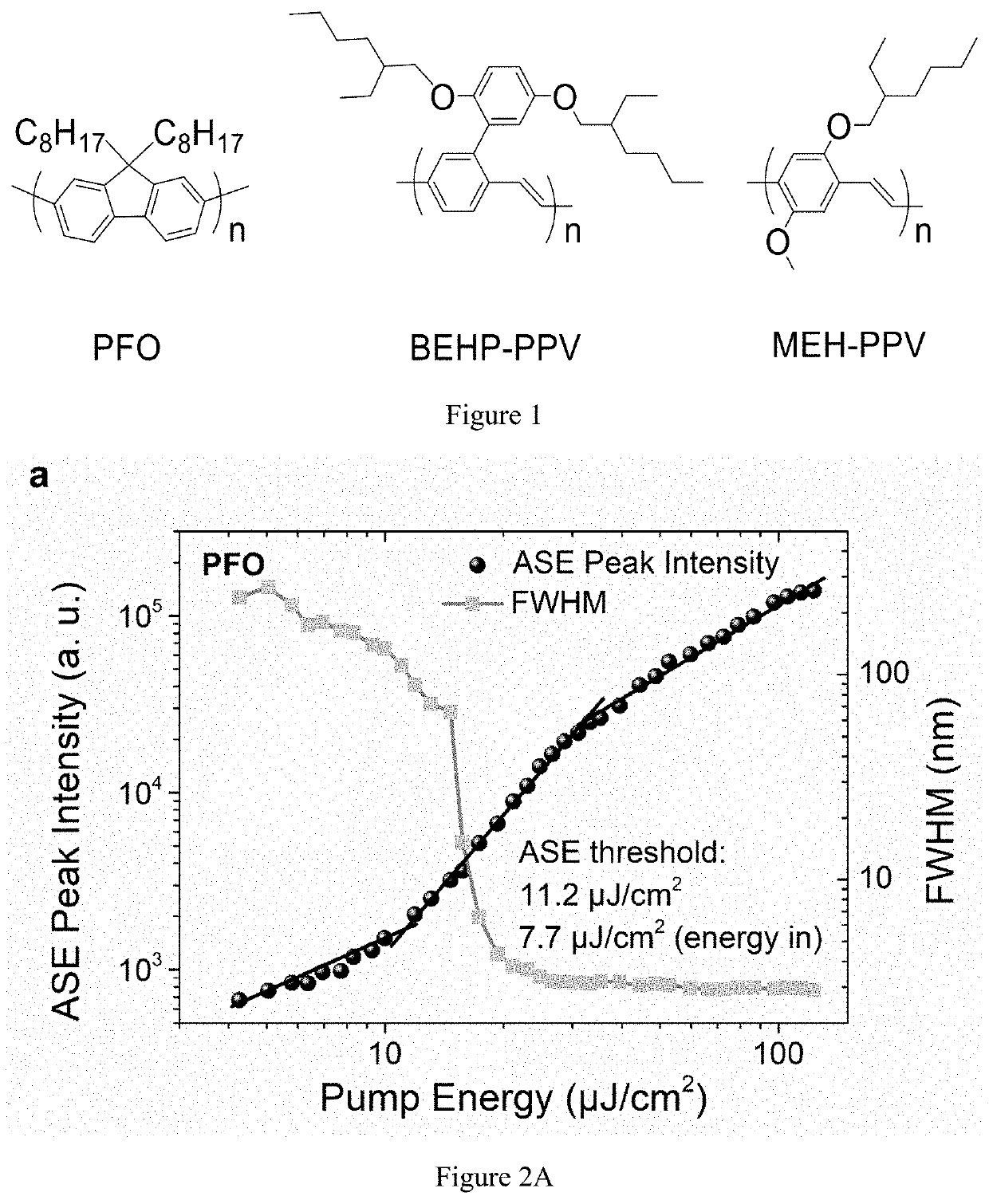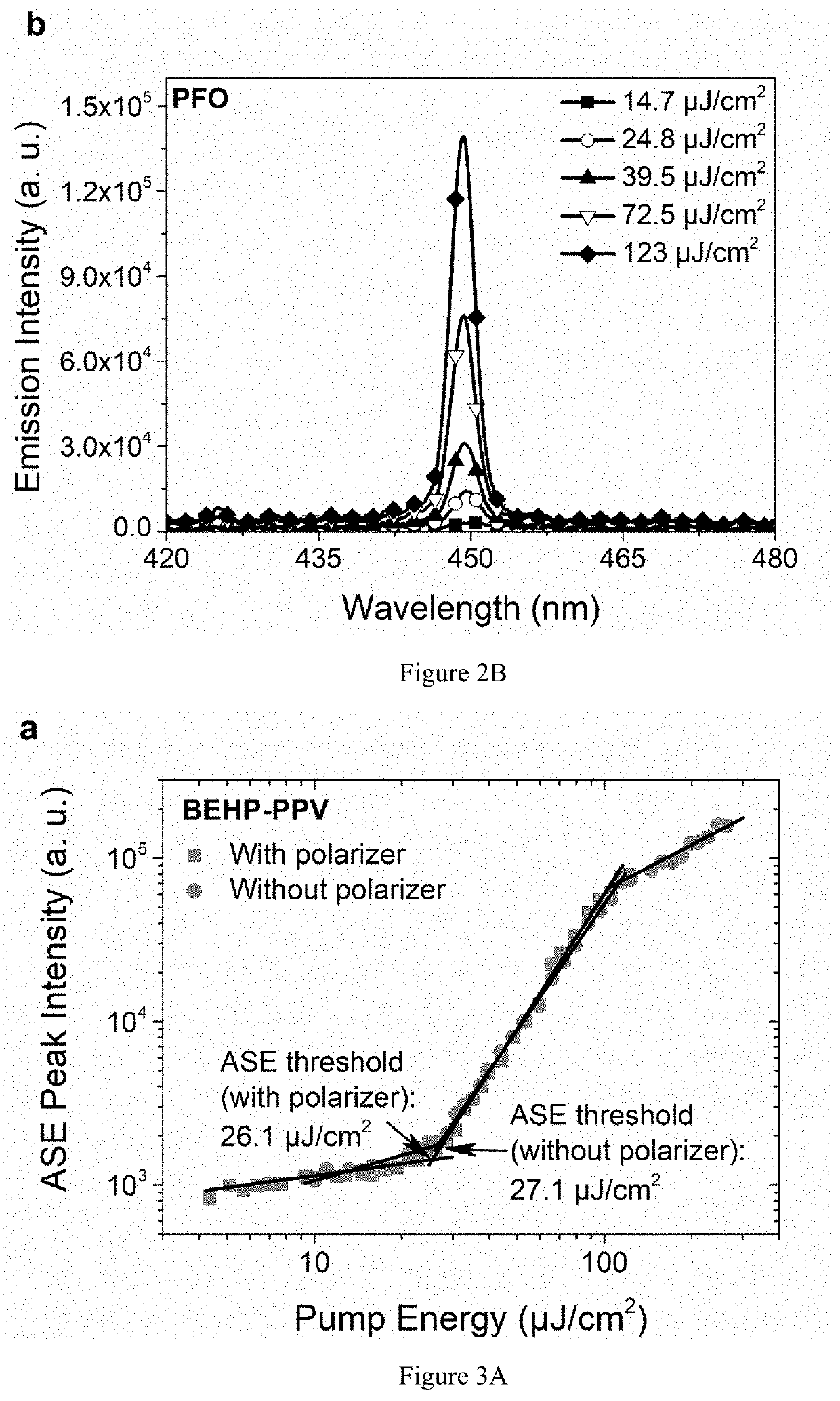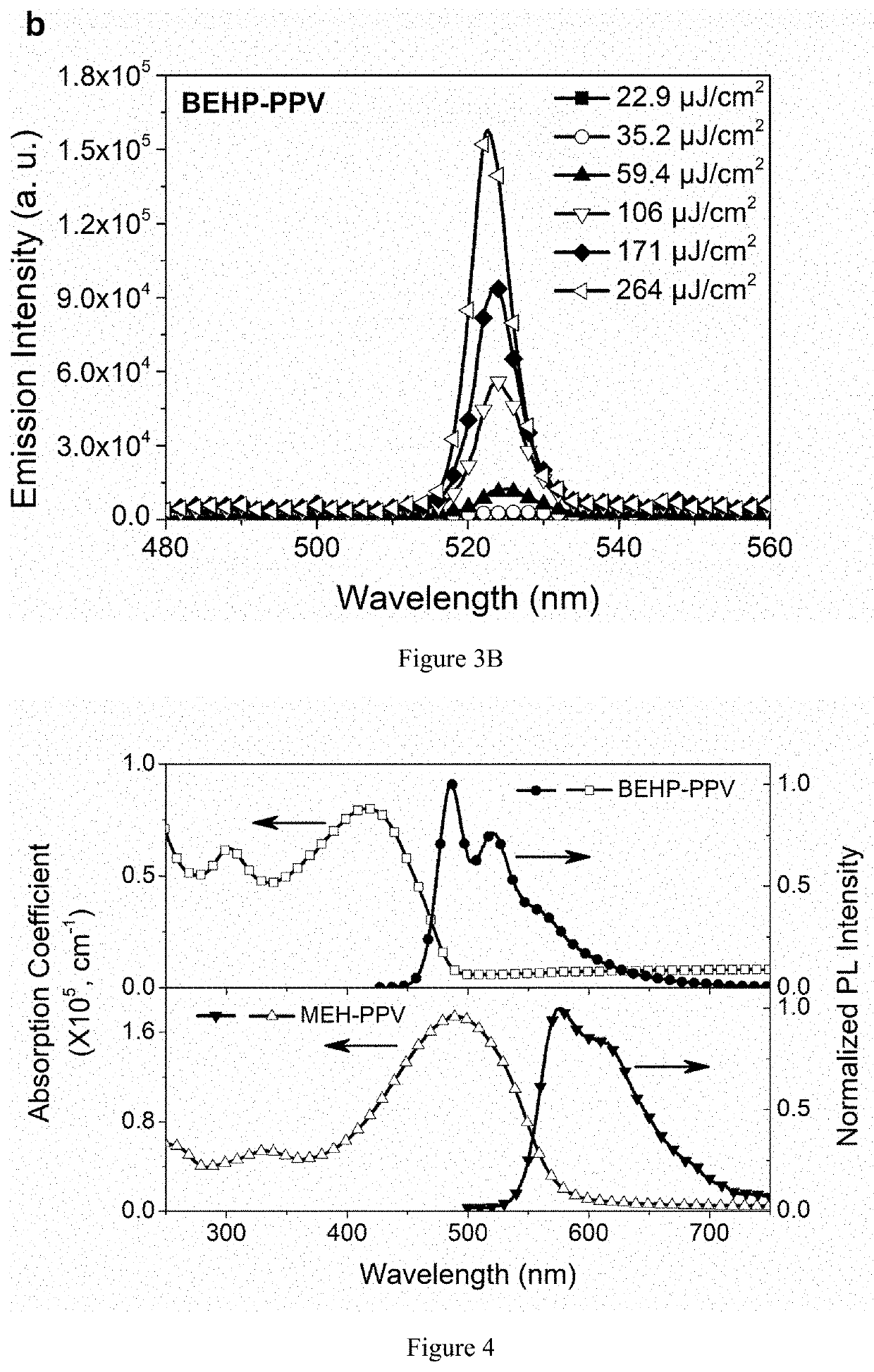Tunable laser materials comprising solid-state blended polymers
a blended polymer and laser technology, applied in lasers, active medium materials, coatings, etc., can solve the problems of unrealized optical range of single organic systems, achieve cost-effective production, simplify design, and facilitate multi-wavelength laser sensor system integration
- Summary
- Abstract
- Description
- Claims
- Application Information
AI Technical Summary
Benefits of technology
Problems solved by technology
Method used
Image
Examples
Embodiment Construction
[0104]The present invention is not to be limited in scope by any of the specific embodiments described herein. The following embodiments are presented for exemplification only.
[0105]Organic Gain Media
[0106]Poly(9,9-dioctylfluorene) (PFO) is selected as one of the blended polymers for blue emission. Poly(2-(2′,5′-bis(2″-ethylhexyloxy)phenyl)-1,4-phenylenevinylene) (BEHP-PPV) and poly(2-methoxy-5-(2-ethylhexyloxy)-1,4-phenylenevinylene) (MEH-PPV) are selected as the two polymers for green to red emission (FIG. 1). It is possible for some materials / compounds to exhibit lasing or ASE when they are in solution form; in solution they are well separated physically, and therefore behaves as individual. However, when in solid form, the materials which can be a compound (e.g. a molecule) or atom, are then closely packed. Under these conditions, they will influence each other; one consequence of the closeness is that it quenches any luminescence, including lasing and ASE. Therefore, materials ...
PUM
| Property | Measurement | Unit |
|---|---|---|
| Thickness | aaaaa | aaaaa |
| Thickness | aaaaa | aaaaa |
| Nanoscale particle size | aaaaa | aaaaa |
Abstract
Description
Claims
Application Information
 Login to View More
Login to View More - R&D
- Intellectual Property
- Life Sciences
- Materials
- Tech Scout
- Unparalleled Data Quality
- Higher Quality Content
- 60% Fewer Hallucinations
Browse by: Latest US Patents, China's latest patents, Technical Efficacy Thesaurus, Application Domain, Technology Topic, Popular Technical Reports.
© 2025 PatSnap. All rights reserved.Legal|Privacy policy|Modern Slavery Act Transparency Statement|Sitemap|About US| Contact US: help@patsnap.com



